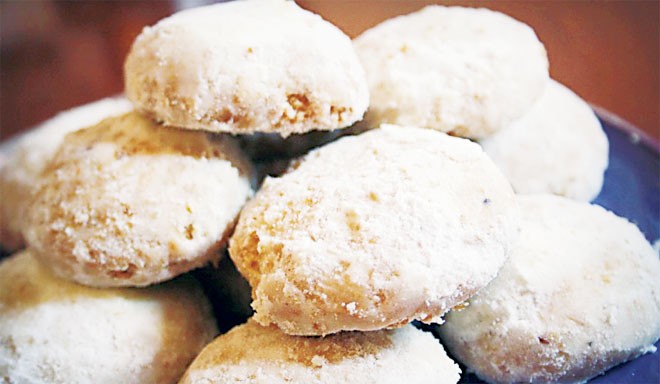

With most of Ramzan’s elephantine bulk behind, Eid preparations are in full swing. Lunches and dinners have been planned over the extended holidays, guest lists completed and menus set in celebration of the inevitable food coma. After a month of fasting it’s almost time for feasting. Whether you’re celebrating Eid in Pakistan or the Far East, Dubai or America, food definitely tops the entertainment activities list. It forms an integral part of the celebrations as families and friends share traditional meals that epitomise the Eid experience. While you may not be in Egypt for Eid it doesn’t mean you can’t bring some of its flavour to your kitchen. We bring you some of the most popular Eid food from around globe to add some international flavour to your dining table this year.
Kahk / Egypt
Kahk al-Eid (a cookie of the feast) is to Egypt what kheer is to Pakistan. This traditional Eid dessert is either baked at home or bought in stores; kahk bakeries overflowing with people days before Eid is common sight in the land of the Pharaohs. These flour cookies are usually filled with agameya, a kind of special honey filling, walnuts, pistachios, lokoums or simply left plain and covered with powdered sugar. There are several versions and variations of kahk eaten all over the Middle East. The Iraqis make a rosewater-scented, date-filled pastry called klaicha. A similar cookie called mamoul is served in Lebanon, Syria and elsewhere, is filled with dates or ground walnuts. Palestinians make a butter cookie with almonds or pine nuts called ghraybeh.
Lapis Legit / Indonesia
Introduced to Indonesia by its former Dutch colonists, lapis legit, a rich “thousand-layered” spice cake is now a traditional dessert for Eid. In the Netherlands, it’s called spekkoek. The cake is a high-maintenance dessert to make because the batter is poured, and broiled, thin layer by thin layer. It has a firm texture and requires lots of patience to bake. Each thin layer is made by pouring a small amount of the batter from a small cup, baked one layer after another in the oven until golden with heat from the top. This cake can be baked in a gas oven but a Dutch oven with charcoal fire on top of the lid produces the best result.
Tufahije / Bosnia Herzegovina
Over in Europe, tufahije, walnut-stuffed apples stewed in water and sugar, is the traditional, must-have dessert of Bosnia and Herzegovina for Eid and other special occasions. Often called the "National Dessert of Bosnia," it is not only common in Bosnia-Herzegovina, but also in Serbia and Macedonia. People claim that tufahije were first made in Persia, and then brought to the region of the Balkans during the spread of the Ottoman rule but infact tufahije is derived from the Arabic word tuffah which means apple.
Tagine / North Africa
From Morocco to Algeria and Tunisia, tagines form a staple in North African cuisines. Each region within each country makes them very differently, but incorporates local ingredients and seasonings set in from generations of passed down recipes and traditions. The choice of meat, lamb, beef or mutton is usually marinated over-night in a spice rub and slow cooked later. Most meats and vegetables are cooked in the tagine itself and spooned over couscous (cooked separately) when eating.
Shai Mai Eid / Burma
One Eid dessert that seems to be common world over is pudding made with either vermicelli or rice cooked in sweetened milk, locally known as savaiyan or kheer. Whether in the Fiji Islands, the Middle East, Burma, Africa or even parts of Europe or North America, every family has their own version of this dish. Standard ingredients include milk, sugar and vermicelli or rice. Some recipes also call for nuts or dried fruits and, to spice it up, a hint of cardamon. Shai Mai Eid, literally meaning ‘a meal of Eid’ is the Burmese version of vermicelli pudding, served with fried cashews, coconut shreds, raisins and milk.